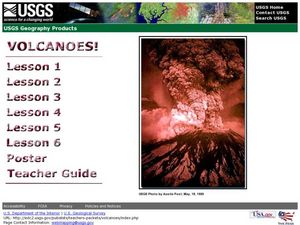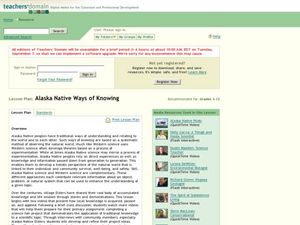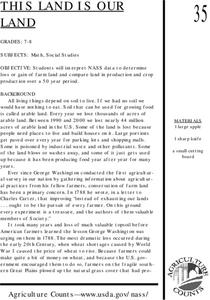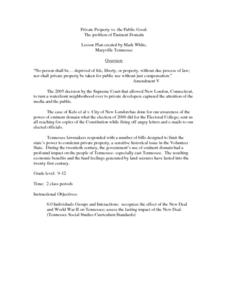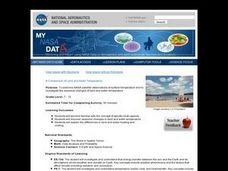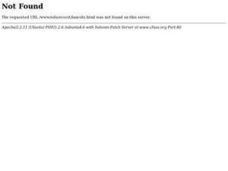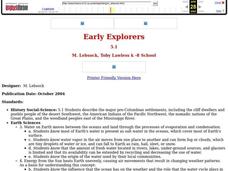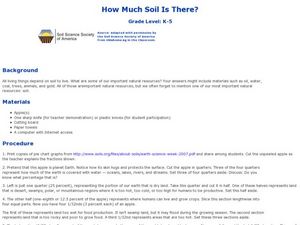Curated OER
Volcanoes: USGS Geography
Students research volcanoes. For this volcanoes unit, students examine components of a volcano, how it is created, what causes it to erupt, and the results of an eruption. There are a series of 6 lessons included in this unit. Students...
Curated OER
The Land Around Us - Lesson 3
While the content of this lesson is more specific to the first grade, the directions given to work on a PowerPoint are well written. These directions could be used by anyone, with any content. Younger learners may need help reading the...
Curated OER
Change Since 1609
Students recognize how the climate of the Hudson Valley has changed since the last glaciation. They explain these changes using a reconstruction of the land use changes in the Hudson Valley composed of confetti, Ziploc bags and other...
Curated OER
Alaska Native Ways of Knowing
Pupils watch a video on the Alaskan native ways. They examine how knowledge was passed down from elders and how the Alaskans lived with harmony in nature. Learners then prepare and present a classroom science fair project based on...
Curated OER
This Land is Our Land
Students interpret NASS data to determine loss or gain of farm land and compare land in production and crop production over a 50 year period.
Curated OER
Private Property Vs. the Public Good: the Problem of Eminent Domain
Students view video The Electric Valley, discuss film clips and review news articles and other documents pertaining to eminent domain, prepare declarative statement on issue that has pro or con side, and present case to opposing side in...
Curated OER
Arsenic and Lead Scavenger Hunt
Health wizards read and discuss an article about lead contamination then come up with a plan to help solve the problem. They get into groups to develop a community solution within the parameters of a budget, feasibility, and the source...
Curated OER
Compound Species
Learners gather pictures of animals, fish, birds, and insects, and sort them by category: land, sea, and air creatures. They choose two of these categories and imaginatively combine part of animals (such as horns, tentacles, fins, floppy...
Curated OER
A Comparison of Land and Water Temperature
Learners examine NASA satellite observations of surface temperature and investigate the seasonal changes of land and water temperature.
Curated OER
Geography Vocabulary
In this geography worksheet, students match vocabulary words to their definitions having to do with bodies of land and water. Students complete 10 problems.
Curated OER
Soil Investigations
Students examine the basics about soil. In this soil lesson students describe the physical properties of soil and explain what soil profile is.
Curated OER
Making & Breaking : The Rock Cycle
Students examine the rock cycle and how rocks can change over time. In this geotechnical engineering lesson students draw a diagram of the rock cycle.
Curated OER
Build Illinois
Students examine the history of the formation of Illinois. Traveling virtually between time periods, they describe each period and compare them with how Illinois is now. They work together to complete an activity and worksheet.
Curated OER
The Great Water Hunt
Students examine a globe to locate the bodies of water present and create a representation of those bodies of water for further exploration of the concept. Extensions of their observations are made at school, home, and the community.
Curated OER
Land Quality Issues
In this unit of lessons, students examine land quality issues. They discover food chains and practice reading them. They also examine the erosion of soil and how it affects the environment.
Curated OER
Earth's Land as an Apple
Students explore the value of land and the importance of conserving it as a limited resource. They observe a experiment where an apple represents the earth. From the demonstration, students visually see the fractions and percentages that...
Curated OER
Early Explorers
Fifth graders study early explorers. In this World history lesson, 5th graders draw an outline of a map labeling each part, build geographical features out of dough, and paint each of the land and water features.
Curated OER
How Much Soil is There?
Students examine that all living things depend on soil to live. In this science lesson plan, students pretend that an apple is planet Earth. Students cut the apple to represent the portions of Earth with the last section representing soil.
Curated OER
Elbow Room - Exploring Population Density
In this population activity, students click on the links and research the internet about population, land, and government. Students answer 16 short answer questions including making spreadsheets.
Curated OER
This Land Is Our Land
Students explore land use. In this land lesson, students examine the use of land and land records. They create a diagram of a specified piece of land and determine the area of the land. Students discuss their findings.
Curated OER
The World's Soil
In this world's soil worksheet, students use an apple to simulate the amount of soil in the world. They cut the apple into 1/32 to represent the soil and along the way they draw pictures for each cut and label what the pieces represent.
Curated OER
Erosion: Natural or Unnatural
Students explore how water has the power to erode, how developing the land (building roads, buildings and parking lots) increases the amount of water reaching our rivers, and how this greater quantity of water increases erosion. They...
Curated OER
Lesson Plan on Volcanoes
Fourth graders are able to label a diagram of a volcano with a least 3 of the following parts: the magma chamber, vents, dome, and caldarea. They break up into groups of four and design their own volvanoes using paper and drawing...
Curated OER
Healthy Living: Multicultural Awareness and Appreciation Adaptation
Students recognize a globe and distinguish between land and water, as well as recognize different cultures. They become knowledgeable regarding geography and cultural diversity.


